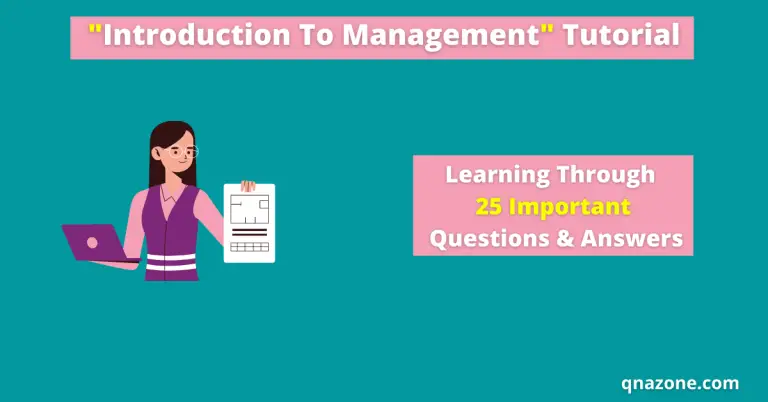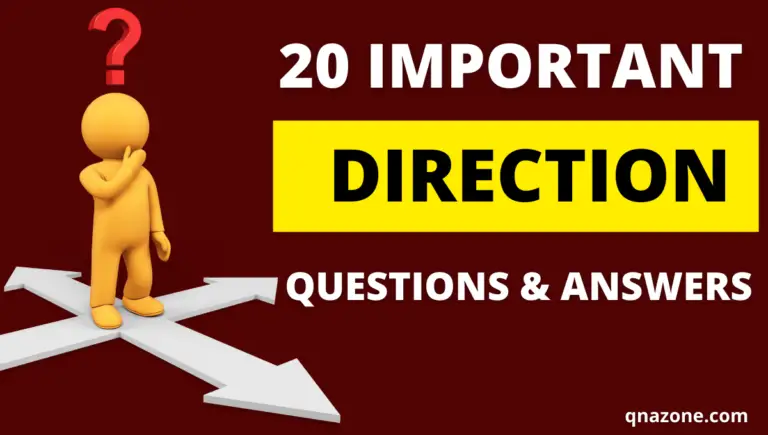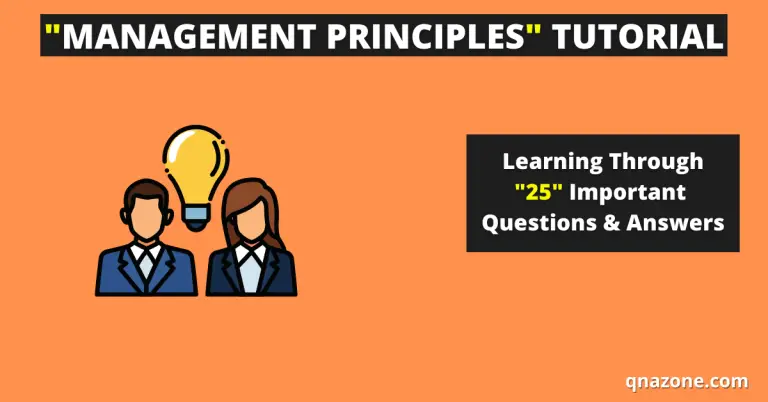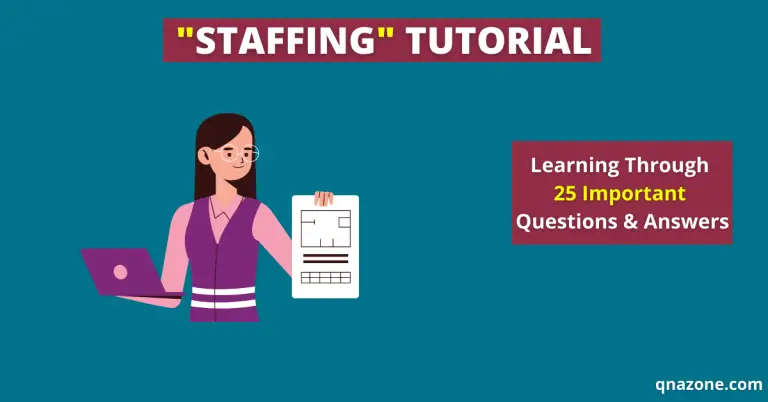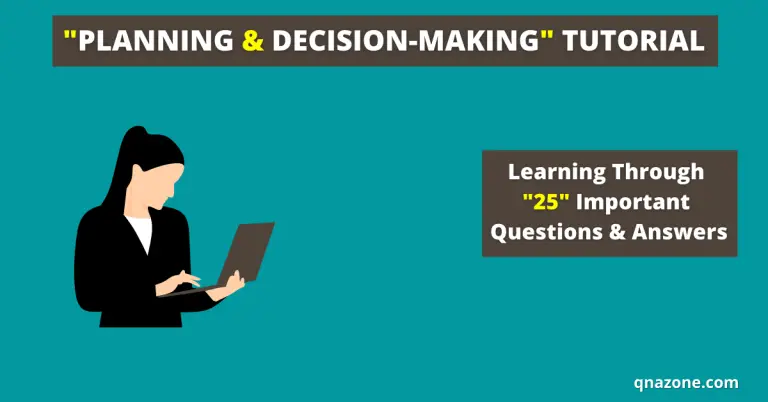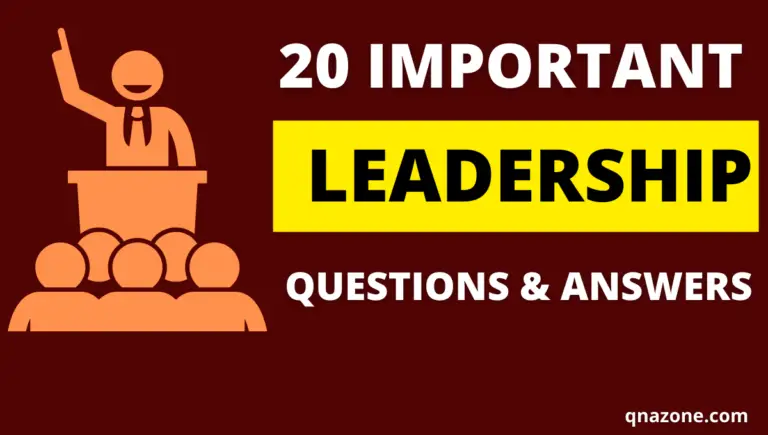30 Important Organizing Questions and Answers [With PDF]
The 4th chapter of our Management learning course is “Organizing”. In this article, we’ll learn the 30 most important organizing questions and their answers.
It will help you understand the important organizing terms and their explanations quickly.
You can read the previous three chapters of our management learning course here if you missed them.
- 25 Important Introduction to Management Questions and Answers [With PDF]
- 25 Important Management Principles Questions and Answers [With PDF]
- 25 Important Planning and Decision Making Questions and Answers [With PDF]
By reading this post, you may quickly prepare for management courses and for any competitive tests such as school and college exams, vivas, job interviews, and so on.
So let get started…
Organizing Questions and Answers
The 30 important Organizing questions and answers are as follows:
Question 01: What is Organization?
Answer: Organization is the division of work, the assignment of responsibilities, and the determination of the interrelationships between each task and department.
Question 02: What is the Importance of Organizing and Organization?
Answer: The importance of organizing and organization is as follows:
- Assist in the achievement of a goal
- Efficient resource utilization
- Assistance with specialization
- Effortless coordination and control
- Creativity enhancement
- Developing effective leadership
- Developing Discipline
Question 03: What are the Principles of Organization?
Answer: The principles of organization are as follows:
- Principle of goals
- Principle of efficiency
- Principle of determining the optimum span of supervision
- Principle of scalar-chain
- Principle of defining specific responsibility
- Principle of unity of command
- Principle of simplicity and clarity
- Principle of specialization
Question 04: What are the Steps of an Organizational Process?
Answer: The following are the steps of an organizational process:
- Job classification
- Defining authority and responsibility
- Delegation of authority and responsibility
- Identifying interpersonal relationships
Question 05: What Characteristics Define a Good Organization?
Answer: A good organization has the following characteristics:
- Object-oriented
- Simple to understand
- Possibility of specialization
- Well-defined roles and responsibilities
- Proper balancing
- Discipline and loyalty
Question 06: What is Organization Structure?
Answer: The organization structure refers to the relationship between the various individuals, departments, and sub-divisions employed in the organization.
Question 07: What is Organization Chart?
Answer: When the relationship between various people, departments, and sub-divisions working in an organization is represented in a chart, it is referred to as an organization chart.
Question 08: What are the Types of Organization Structure?
Answer: The types of organization are as follows:
- Line organization
- Line and staff organization
- Functional organization
- Matrix organization
- Committee Organization
Question 09: What is Line organization?
Answer: An organization in which the line of authority descends in a straight line from top to bottom is called a line organization.
Question 10: What are the Characteristics of Line Organization?
Answer: The following are the characteristics of line organization:
- It is simple and easy to understand the organization
- Self-sufficient division
- The departments report to a general manager.
- More appropriate for organizations with less complexity and smaller size.
- The line of authority descends in a horizontal or straight line from top to bottom.
Question 11: What Are the Benefits of Having a Line Organization?
Answer: The following are the benefits of a line organization:
- Explicit delegation of responsibility and authority.
- Timely decision-making and execution.
- Enforcing strict discipline
- Enhancement of executive efficiency
- Specific indicator of promotion
- Consistent and strong organization
Question 12: What are the Disadvantages of Line Organization?
Answer: The following are the disadvantages of line organization:
- A lack of specificity
- A proclivity for autocracy
- Increase in executive workload
- Loss as a result of the executive absence
- Coordination issues
- Unsuitable for complex and large-scale enterprises
Question 13: What is Line & Staff Organization?
Answer: A straight line and staff organization is one in which the line of authority descends from the top to the bottom in the shape of a straight line but actually employs staff to assist the line executive.
Question 14: What are the Advantages of Line and Staff Organization?
Answer: The advantages of benefits of line and staff organization are as follows:
- Reducing the burden on executives
- Reducing the possibility of whims
- Prompt problem resolution
- Obtaining the benefits of division of labor
- Obtaining flexibility
- The Benefits of Coordination and Control
Question 15: What are the Disadvantages of Line and Staff Organization?
Answer: The disadvantages of line and staff organization are as follows:
- Increase in spending
- A lack of clarity in authority and responsibility delegation
- Possibility of being overlooked for expertise
- Creating conflict among executives
- Decision-making sluggishness
- The obstacle to the development of high-quality expertise
Question 16: What is a Functional Organization?
Answer: A functional organization is an organization in which the tasks are divided into small parts and the responsibilities of each department are delegated to the expert staff with limited authority.
Question 17: What are the Advantages of the Functional Organization?
Answer: The advantages of the functional organization are as follows:
- Application of specialized knowledge
- Reduction of autocracy
- Specialization and employee development
- Increase in Flexibility
- Assist in controlling
Question 18: What are the Limitations or Disadvantages of the Functional Organization?
Answer: The limitations or disadvantages of the functional organization are as follows:
- Increase in employee workload
- Lessening of line-authority influence
- Possibility of avoiding responsibility
- Lack of self-control
- Applicability restrictions
Question 19: What is Committee?
Answer: A committee is a group of individuals who are entrusted with the task of performing a particular task on behalf of the organization.
Question 20: What is the Nature of Committee?
Answer: The nature or feature of the committee is as follows;
- It is an association of a group of people.
- The members of the committee are elected by the organizational rules or nominated by their superiors
- It is permanent or temporary in nature
- It is made for multiple purposes
Question 21: What are the Advantages of Committee?
Answer: The main advantages of the committee are as follows:
- Opportunity to group discussion
- Advantages in communication
- Representation of group-interest
- Increase of co-operation
- Avoidance of unwanted situation
Question 22: What are the Disadvantages of the Committee?
Answer: The disadvantages of the committee are as follows:
- Divided responsibility
- Slowness
- Tendency towards indecision
- The danger of compromising decision
- Tendency to establish own opinion
Question 23: What is Matrix Organization?
Answer: Matrix organization refers to an organizational structure that consists of product and functional classification.
Question 24: What is the Nature of Matrix Organization?
Answer: The nature or feature of matrix organization is as follows:
- It is a mixture of work-based and product-based segmentation.
- In this case two types of managers work simultaneously. Namely: Executive Manager and Project Manager.
- The job of the executive manager is to provide manpower, tools, and services as per the needs of the project manager.
- Both types of managers are responsible to the general manager for their work.
Question 25: What are the Advantages or Benefits of Matrix Organization?
Answer: The advantages or benefits of matrix organization are as follows;
- Increasing efficiency of the executives
- Developing co-operation
- Establishing effective coordination
- Providing assistance to chief executives
- Co-ordination between intelligence and efficiency
Question 26: What are the Limitations or Disadvantages of Matrix Organization?
Answer: The following are the limitations or disadvantages of matrix organization:
- Increasing administrative cost
- The danger of dual authority
- Making conflict
- The problem in taking group decision
- Problem in change
Question 27: What are the Considerable Factors for Designing Organization Structure?
Answer: The considerable factors for designing organization structure are as follows:
- Objectives
- Efficiency
- Specification
- Specialization
- Balancing
Question 28: What is the Optimum Span of Management?
Answer: Optimum span of management refers to the number of subordinates under the direct supervision of a manager whose work he or she is able to successfully manage and whose expenditure is minimal.
Question 29: What is Formal Organization?
Answer: Formal organization is the structure of the relationship between individuals working in the organization based on the rank created by the organizational structure.
Question 30: What is Informal Organization?
Answer: Informal organization is the structure of the relationship formed between the individuals involved in the organization as a result of personal desires and dissatisfactions, likes and dislikes, social, religious, political, and so on.
I hope that by the end of this post, you have a good understanding of the “Organizing” chapter.
You will gain a better understanding of the “Organization” chapter if you read these 30 important organizing questions and answers on a regular basis.
You may also read:

